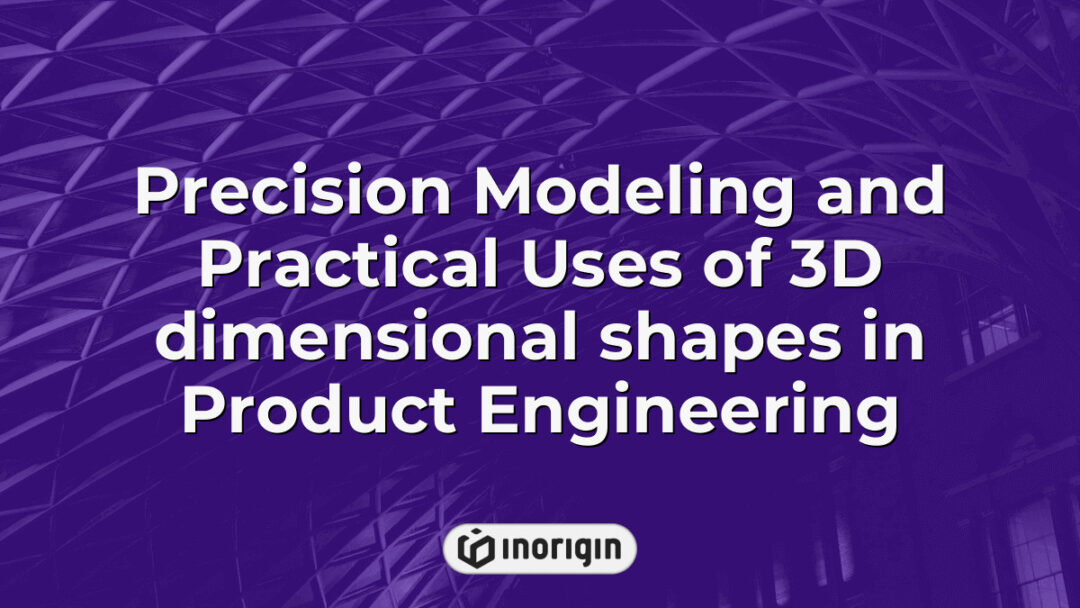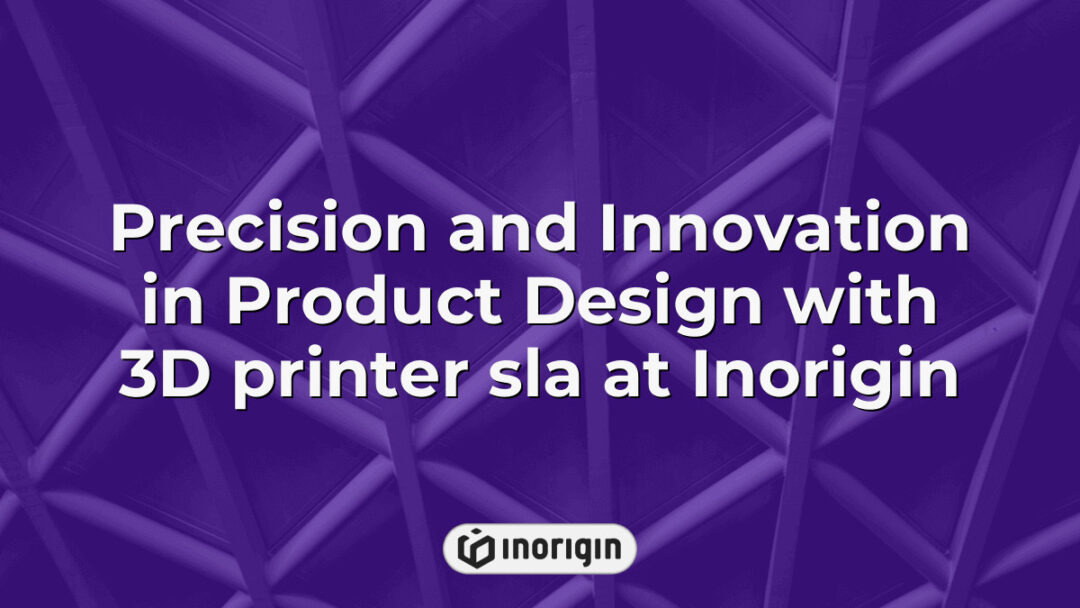In an age where convenience and immediacy dominate consumer preferences, the notion of crafting intricate three-dimensional objects from the comfort of home may seem like a whimsical relic from a science fiction narrative. Yet, online 3D printing services have emerged as a transformative force in both industrial design and personal creativity, blending cutting-edge technology with unprecedented accessibility. These platforms not only democratize manufacturing processes but also challenge traditional notions of production by enabling users to materialize virtually anything—from bespoke components for engineering projects to unique artistic expressions—without ever leaving their living rooms. Thus, the intersection of digital innovation and tangible creation invites a critical examination of how these services are reshaping economies, societies, and individual craftsmanship in ways previously deemed impractical or impossible.
| Aspect | Key Takeaway |
|---|---|
| Accessibility | Online 3D printing services provide convenient access to advanced manufacturing technologies, enabling swift design-to-production workflows from any location. |
| Material Versatility | These services support diverse materials such as PLA, ABS, Nylon, and Polycarbonate, offering tailored options to meet both functional and aesthetic project requirements. |
| Service Features | Tools like instant price quotes and design adjustments accelerate planning and enable efficient revisions to achieve optimal production results. |
| Turnaround Time | Typical production spans from several days up to a week, depending on design complexity, chosen materials, and the provider’s capabilities. |
| Design Constraints | Factors including material properties, printer resolution, and support needs define achievable design intricacy, guiding realistic project expectations. |
| Order Flexibility | Platforms accommodate both single items and small batch orders, empowering prototype development and scalable production without excess commitment. |
| Quality Assurance | Selecting experienced online 3D printing services and submitting detailed design files ensures precise, durable, and visually appealing final prints. |
Overview Of Online 3D Printing Services
The realm of online 3D printing services operates as a dynamic ecosystem, where the marriage of technology and creativity fosters innovation akin to the blossoming of a flower. Within this environment, various platforms offer seamless access to advanced 3D printing techniques that cater to diverse industries and individual needs. Online 3D printing services empower users by providing instant quotes, thereby eliminating uncertainties regarding project costs and timelines. The functionality of these services encompasses an array of materials and technologies, including fused deposition modeling (FDM), stereolithography (SLA), and selective laser sintering (SLS). By allowing customers to upload their designs from anywhere in the world, businesses harness the digital landscape to enhance accessibility while offering professional-grade outputs with remarkable precision. This convergence of convenience and capability not only democratizes manufacturing but also invites collaboration across borders, making it clear that online 3D printing is reshaping traditional paradigms within both artistic expression and industrial production.
How To Choose The Right Online 3D Printing Service
Selecting the appropriate online 3D printing service necessitates a thorough evaluation of various factors that influence both quality and efficiency. First, it is essential to consider the specific requirements of the project, such as material compatibility and desired print resolution; these elements can significantly affect the final outcome. Additionally, an effective 3D printing service should offer flexibility in terms of order size, particularly those providing no minimum order requirements, which allows users to print prototypes or small batches without financial burdens associated with larger quantities. Furthermore, prospective clients are encouraged to assess services based on their ability to deliver instant quotes, as this feature enhances transparency regarding pricing structures and fosters informed decision-making. By systematically weighing these considerations, individuals and organizations can make educated choices that align closely with their production goals while ensuring optimal satisfaction with the selected service.
Popular Online 3D Printing Platforms
The landscape of online 3D printing services is characterized by a multitude of platforms, each with distinct features and capabilities that can meet diverse needs. As the demand for custom parts escalates across various industries, selecting an appropriate service becomes crucial. Prominent online 3D printing platforms have emerged, offering innovative solutions to both hobbyists and professionals alike. Among these platforms are:
- Material Availability
- Standard materials (PLA, ABS)
- Advanced materials (Nylon, Polycarbonate)
Service Features
- Instant price calculators
- Design modification tools
This diversity not only provides users with choices tailored to specific project requirements but also highlights the advancements in technology that underpin these services. For instance, some services offer sophisticated algorithms for optimizing print quality while minimizing waste material—factors that directly impact cost efficiency and environmental sustainability in d printing endeavors. In evaluating popular online 3D printing platforms, it becomes evident that each option comes equipped with unique advantages and potential limitations which necessitates careful consideration based on individual project goals and technical specifications.
Comparing Costs And Materials In Online 3D Printing
The landscape of online 3D printing services has experienced significant changes, particularly regarding costs and materials. Research indicates that the global market for 3D printing is projected to surpass $32 billion by 2026, reflecting a growing demand for on-demand production capabilities (Statista, 2021). This increase in market value underscores the importance of cost comparisons among various 3D printing service providers, as prices can vary substantially based on material selection and manufacturing techniques employed. Notably, common materials such as PLA (Polylactic Acid), ABS (Acrylonitrile Butadiene Styrene), and nylon each present distinct advantages and pricing structures; thus, an informed decision must consider not only the immediate financial implications but also the intended application of the printed objects. Furthermore, it is essential to note that while cheaper materials might reduce up-front expenses, they may lack durability or precision when compared with premium options. Consequently, evaluating both cost and material quality ultimately determines the most suitable choice within the diverse spectrum of available online 3D printing services.
Tips For Getting The Best Results From Online 3D Printing Services
In the realm of online 3D printing services, achieving optimal results can often feel akin to navigating a labyrinth; each choice made along the way significantly impacts the final output. To begin with, it is essential to select a reputable service that prioritizes quality and possesses expertise in various materials suited for rapid prototyping applications. Moreover, clear communication regarding project specifications cannot be overstated; providing precise dimensions and detailed design files minimizes misunderstandings and enhances overall product fidelity. Furthermore, taking advantage of available resources such as online reviews and customer testimonials serves as a valuable guide in discerning which services consistently deliver outstanding outcomes. Lastly, understanding the limitations inherent to different types of printers—including build size, layer resolution, and material compatibility—ensures that expectations align realistically with what technology can achieve. Implementing these strategies not only facilitates smoother interactions with providers but also fosters an environment where innovation can flourish through effective utilization of online 3D printing capabilities.
Frequently Asked Questions
What Types Of Files Can I Upload For 3D Printing?
The realm of 3D printing beckons with promises of innovation, yet one may wonder if this advanced technology can even accommodate the files stored on a dusty flash drive or buried deep in an ancient folder named "Important Stuff." In reality, online 3D printing services typically accept a variety of file formats that cater to the complex nature of three-dimensional modeling. Commonly accepted file types include STL (Stereolithography), which serves as a cornerstone within the industry due to its ability to describe the geometry of 3D objects without retaining color or texture data; OBJ, known for its capacity to handle color and texture alongside geometric information; and AMF (Additive Manufacturing File Format), designed explicitly for additive manufacturing processes. Furthermore, certain platforms support more specialized formats such as PLY (Polygon File Format) and 3MF (3D Manufacturing Format), allowing users greater flexibility in conveying detailed visual properties. It is essential for potential users engaging with these services to familiarize themselves with specific requirements outlined by individual providers, including maximum file sizes and additional constraints related to model intricacies. Ultimately, mastering the nuances of compatible file types plays a crucial role in ensuring successful print outcomes while navigating the landscape of digital fabrication infrastructure.
What Is The Typical Turnaround Time For Online 3D Printing Services?
The efficiency of online 3D printing services is often reflected in their typical turnaround time, which may vary significantly based on several factors. Generally speaking, the process begins with file upload and selection, followed by an assessment phase wherein the uploaded design undergoes a review for suitability and potential manufacturing challenges. Upon approval, the production stage commences where advanced printing technologies transform digital models into tangible objects. It is noteworthy that various parameters influence this duration; these include the complexity of the design, material choice, and specific service provider capabilities. Furthermore, additional time might be necessary for post-processing activities such as cleaning, curing, or assembly if required. Ultimately, while many providers aim to deliver completed products within a few days to a week—aligning with customer expectations—the intricacies of individual orders often necessitate custom timelines reflective of each project’s unique demands. Understanding these dynamics facilitates informed decisions regarding project planning and scheduling within the realm of online 3D printing services.
Are There Any Limitations On The Complexity Of Designs That Can Be Printed?
The realm of online 3D printing services unfolds like an intricate tapestry, interwoven with both opportunities and constraints in design complexity. As individuals and businesses harness this technology to manifest creative visions, it becomes essential to scrutinize the limitations that may govern the extent of intricacy achievable within printed models. While some aspects of design can flourish unfettered, several critical factors delineate boundaries for what can be effectively produced through these services:
- Material Constraints: Different materials possess varying levels of adaptability regarding detailed features; thus, certain designs may require a more suitable medium.
- Printer Specifications: The capabilities of individual printers—such as resolution, layer thickness, and print speed—significantly influence the fidelity with which complex geometries can be rendered.
- Support Structures: Highly intricate designs often necessitate additional support during fabrication, raising considerations about post-processing time and overall product integrity.
Understanding these limitations allows designers to navigate their creations thoughtfully while optimizing for the technologies employed by online 3D printing providers. Engaging effectively with such constraints fosters innovative approaches to achieve desired outcomes without compromising design intent or structural viability.
What Should I Do If My 3D Print Arrives Damaged Or Unsatisfactory?
When a 3D print arrives in a damaged or unsatisfactory condition, several procedures should be followed to address the issue effectively. Initially, it is advisable to conduct a thorough inspection of the item upon receipt, documenting any visible defects through photographs and detailed notes. This evidence serves as crucial documentation for any potential claims or communications with the provider. Subsequently, contacting customer service is essential; this typically involves reaching out via email or phone to report the problems identified during the inspection process. During this interaction, it is pertinent to provide clear descriptions of the damage along with accompanying photographic evidence. Many online 3D printing services have specific policies outlined on their websites regarding returns and refunds that may offer additional guidance on how to proceed. Moreover, some providers might require customers to return the damaged product before issuing replacements or refunds, underscoring the importance of understanding the terms and conditions associated with each service provider. Following these steps can facilitate an efficient resolution while maintaining a professional relationship with the supplier involved.
Can I Order A Small Batch Of Custom Prints Instead Of A Single Item?
The notion of ordering a single custom 3D print, while appealing in its simplicity, may evoke visions of limited production akin to the era of artisanal crafts; however, technological advancements have made it increasingly feasible for individuals and businesses alike to request small batches of prints. As online 3D printing services evolve, they offer customers the option to produce multiple items tailored to specific needs or applications. This approach enables creators and entrepreneurs to test designs on a smaller scale before committing to larger commercial runs, thereby reducing waste and optimizing resources. Furthermore, producing small quantities often allows for greater customization, as adjustments can be easily incorporated into subsequent iterations based on user feedback or design improvements. With options ranging from standard production timelines to expedited services that cater to urgent demands, these platforms facilitate an efficient workflow that promotes innovation while simultaneously catering to niche market desires. Thus, when contemplating projects that require more than just one solitary piece, leveraging online 3D printing services proves not only pragmatic but also instrumental in fostering creativity and entrepreneurship within an increasingly competitive landscape.
Conclusion
The evolution of online 3D printing services offers unprecedented opportunities for creativity and innovation, transforming ideas into tangible realities. By harnessing these platforms with informed choices, individuals and businesses alike can unlock a world where imagination knows no bounds, inspiring future generations to dream more boldly than ever before.
Related posts:
- Precision and Innovation in 3D Printing Services at Inorigin Patra
- Material Selection and Precision Engineering in Print Service 3D at Inorigin
- Precision Workflow Enhancements for Obj File Models in Product Design and 3D Rendering
- Product Engineering Service Transforming Ideas into Market-Ready Innovations at Inorigin
- Precision Engineering and Material Innovation in 3D Print Services at Inorigin
- 3D printers near me and Advanced Local Services Powering Precise Product Prototyping




